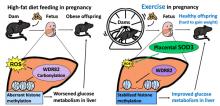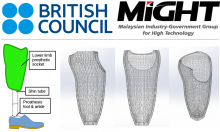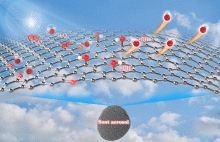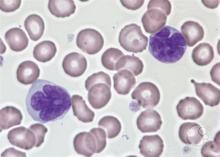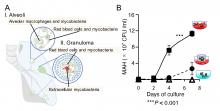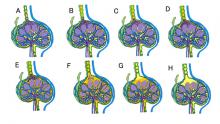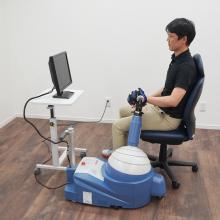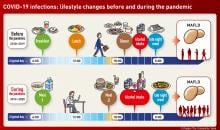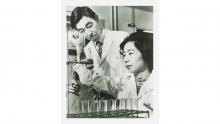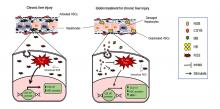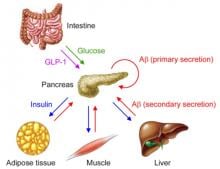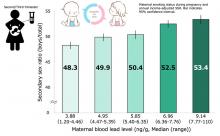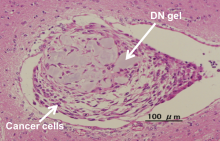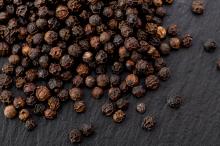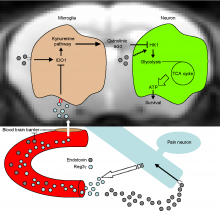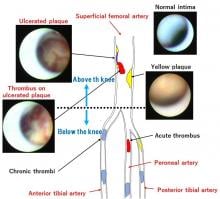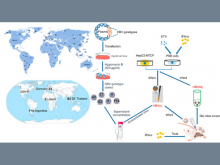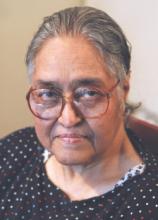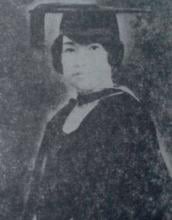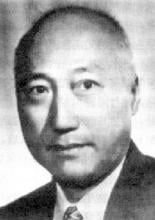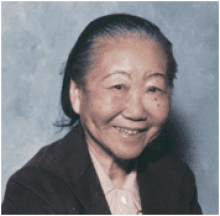Health
News
14 Apr 2022
Exercising during pregnancy bestows a wealth of benefits upon a child. New research suggests that exercise may also help reduce the offspring’s chances of getting type 2 diabetes. Researchers uncovered how SOD3, a key protein released by the placenta after exercise, improves the metabolic health of offspring and negates the impacts of maternal obesity and poor diets.
14 Apr 2022
Giants in History: Filipino chemist and pharmacist Manuel A. Zamora (29 March 1870 – 9 July 1929) is best remembered for his discovery of the tiki-tiki formula to combat beriberi, a disease caused by Vitamin B1 deficiency

13 Apr 2022
• Effects of gestational bisphenol A exposure were compared between rat dams and their offspring.
• Bisphenol A affected the dams' circadian rhythm, immune response, and insulin resistance.
• Nevertheless, at the multi-omics levels (transcriptome and lipidome), the impact on the dams was less than on their offspring.
• Multi-variates analysis successfully differentiated the multi-omics effects between dams and their offspring.
10 Apr 2022
Malaysian and UK medical device and composite materials experts have partnered up to research into using natural fibres for prosthetic limb technology to lower the cost of the prosthesis
08 Apr 2022
A population health survey in Hong Kong revealed that 50% of people aged 15 to 84 were either overweight or obese because of insufficient intake of wholegrains, fruits, and vegetables, and the increasing consumption of sugar-sweetened and alcoholic beverages, convenience foods, take-out food, and other high-density, low-nutrient foods.
01 Apr 2022
Asia Research News monitors the latest research news in Asia. Some highlights that caught our attention this week are a magnetic slime, training for robotic surgeries, and the furthest star from Earth.
31 Mar 2022
Gene editing technology has been used to pinpoint new molecular targets for treating an aggressive form of leukemia in adults.
29 Mar 2022
Mycobacteria are a group of pathogenic bacteria that cause diseases like leprosy and tuberculosis in humans. Now, a new study by scientists at Hiroshima University finds that mycobacteria are associated with red blood cells at lung infection sites, an interaction that has escaped scientific notice for 140 years since the discovery of the organism causing tuberculosis.
29 Mar 2022
Chemotherapy is known for its painful side-effects. It also has limitations when the cancer has metastasized to the lymph nodes. The lymphatic drug delivery system, where anticancer drugs are injected directly into the sentinel lymph nodes under ultrasound guidance, offers an alternative to conventional chemotherapy. Researchers from the Tohoku University Graduate School of Medical Engineering found the optimal osmotic pressure and viscosity ranges, significantly improving the antitumor effect.
25 Mar 2022
Prof. Takashi Takebayashi and his colleague performed a retrospective analysis where they analysed the significance of varied assistance level when using robotic therapy among stroke survivors. They proved that the assistance level needs to be maximised for patients who had severe to moderate stroke whereas the assistance should be minimised for the moderate to mild stroke patients. They stressed on the need for future studies with more objective outcome tools and a larger sample using appropriate research methods.
25 Mar 2022
In a retrospective study drawing data from 973 participants between 2018 and 2020, researchers find that cases of metabolic dysfunction-associated fatty liver disease (MAFLD) increased from 22 pre-pandemic to 44 mid. Additionally, univariate and multivariate analysis of lifestyle habits reveal late-night meals pre-pandemic and increased alcohol intake mid-pandemic as independent lifestyle predictors of developing the disease.
24 Mar 2022
Giants in History: Husband and wife team, Kimishige (3 December 1925 – 6 July 2018) and Teruko Ishizaka (28 September 1926 – 4 June 2019) discovered the antibody class Immunoglobulin E (IgE) that triggers allergic reactions.
23 Mar 2022
Researchers have discovered in mice an additional use of globins as an intravenous drug that can delay liver fibrosis progression. Last year, the application of recombinant human cytoglobin (CYGB) as a protein therapeutic agent against liver damage and cirrhosis was published in Hepatology (Hepatology 2021,73:2527-2545) by Professor Norifumi Kawada’s research group. Here, they studied the antifibrotic properties of the globin family members hemoglobin (HB), myoglobin (MB), and neuroglobin (NGB) in comparison with CYGB. All globins demonstrated greater antioxidant capacity than glutathione in cell-free systems. Interestingly, all globins, except HB, could enter the cells and inhibit the collagen synthesis leading to a suppression of fibrosis development both in vitro and in vivo. The study was published in the journal Redox Biology.
21 Mar 2022
The theme of MTE 2022 is "Embracing the New Norm and Moving to New Frontiers," and this prestigious event is expected to attract over 10,000 online visitors from all over the world via its virtual exhibition platform.
18 Mar 2022
Asia Research News monitors the latest research news in Asia. Some highlights that caught our attention this week are bug survival tactics, melting permafrost, and a new type of dinosaur.
15 Mar 2022
A research group has revealed that amyloid-β (Aβ) detected in blood is secreted from peripheral tissues (pancreas, adipose tissue, skeletal muscle, liver, etc.) that are sensitive to glucose and insulin. Also, that Aβ secreted from peripheral tissues acts as a regulator on pancreatic β-cells to suppress insulin secretion. The results of this study indicate that blood Aβ levels fluctuate significantly with diet, and special care should be taken when using blood samples as a diagnostic marker for Alzheimer's disease, such as taking blood samples during fasting.
14 Mar 2022
Higher lead levels in a mother’s blood can increase the chance of her bearing male offspring, according to new research led by Japanese scientists at the Tohoku University Graduate School of Medicine.
11 Mar 2022
A soft hydrogel could help scientists find treatments for drug-resistant cancer stem cells.
09 Mar 2022
Researchers in Malaysia are using the chemistry of natural products for sustainable health and energy solutions.
08 Mar 2022
A research team led by the National Institute for Physiological Sciences and joined by Hokkaido University explored the role of pain neurons in the regulation of endotoxic death. They found that peptide named Reg3γ acts as a pain neuron-enriched brain-targeted hormone that protects the host from endotoxic death.
08 Mar 2022
Scientists develop a method to genetically label neurons with a single gene of interest in mice by combining the anterograde transsynaptic spread of adeno-associated virus serotype 1 (AAV1) with intersectional gene expression. In two distinct circuits: the retina/primary visual cortex to the superior colliculus and the bilateral motor cortex to the dorsal striatum, injections of AAV1 expressing either Cre or Flpo recombinases and the Cre/Flpo double-dependent AAV into two upstream regions and the downstream region, respectively, were used to label postsynaptic neurons receiving inputs from the two upstream regions.
08 Mar 2022
Hong Kong has an aging population. The number of people 65 or older is forecast to increase to 2.16 million by 2031 and 2.56 million by 2041. As a result, Hong Kong’s recurrent social welfare and health expenditure as a percentage of nominal GDP is forecast to increase from $52.4 billion in 2014 to $563.6 billion in 2042. Hong Kong may experience a structural financial deficit within a decade because of higher social and health spending for older adults and a smaller working-age population.
03 Mar 2022
Asia Research News surveyed institutions in Asia to learn about their latest contributions to antimicrobial resistance research.
22 Feb 2022
A magnetic field could boost blood vessel growth to regenerate damaged tissue.
22 Feb 2022
• Your chances of getting resuscitated by a bystander in Asia if your heart suddenly stops while in a public place depends on whether you’re a man or a woman.
• Across nine Asian communities, in public locations, the bystander CPR rates were 31.2 per cent for females and 36.4 per cent for males.
• For women, the chances of receiving bystander CPR when suffering a cardiac arrest in a public out-of-hospital setting is lower than for men; in homes or private places, the likelihood is reversed.
18 Feb 2022
New research finds the extent of arterial occlusive disease in the popliteal artery correlates with the prognosis of peripheral arterial disease in lower limbs. The study of 31 patients who underwent percutaneous angioplasty of femoropopliteal artery (FPA) proved for the first time that ulcerated plaque observed in the FPA during angioscopy is the source of the thromboembolic mechanism in the popliteal artery.
14 Feb 2022
Advancement in cell lines capable of producing Hepatitis B’s many genotypes can reveal much about the unique virological features and treatment responses eluding researchers of this virus that has been infecting humans as far back as the Bronze Age.
Events
Sorry, no events coming up for this topic.
Researchers
Sorry, no researchers coming up for this topic.
- « first
- ‹ previous
- 1
- 2
- 3
- 4
Giants in history
Chinese biochemist Chi Che Wang (1894 - 1979), one of the first Chinese women to study abroad, advanced to prominent research positions at American institutions including the University of Chicago and the Northwestern University Medical School.
Ruby Sakae Hirose (1904 – 1960) was a Japanese-American scientist whose research contributed significantly to our understanding of blood clotting, allergies and cancer.
Flora Zaibun Majid ( 1939–2018) was an accomplished Bangladeshi researcher in botany and nutrition science and the first female chairperson of the Bangladesh Council of Scientific and Industrial Research.
Iranian physician and bacteriologist Azar Andami (8 December 1926 – 19 August 1984) developed a cholera vaccine to combat an outbreak that swept through the Middle East, India, Southeast Asia, and Africa in 1937.
Irene Ayako Uchida’s (8 April 1917 – 30 July 2013) strides to understand genetic diseases such as Down syndrome paved the way for early screening of chromosomal abnormalities in foetuses.
Baron Kitasato Shibasaburo (29 January 1856 – 13 June 1931) was a Japanese physician and bacteriologist whose work led to a new understanding of preventing and treating tetanus, diphtheria and anthrax.
Maggie Lim (5 January 1913 – November 1995) was a Singaporean physician who promoted family planning and expanded the access to clinics to improve the quality of life for mothers and children in Singapore’s early days.
By isolating soil microorganisms and studying the compounds they produce, Satoshi Omura (born 1935) discovered almost 500 organic compounds with unique properties that were produced by these microorganisms, including many new antibiotics.
The founder of the Adyar Cancer Institute in India, Muthulakshmi Reddy (30 July 1886 – 22 July 1968), fought to uplift women and girls from impoverished situations.
Chinese-American virologist and molecular biologist Flossie Wong-Staal (27 August 1946 – 8 July 2020) was the first scientist to clone HIV and determine the function of its genes.
Maharani Chakravorty (1937 – 2015) was one of India’s earliest molecular biologists whose research paved the way for advances in the treatment of bacterial and viral infections.
Archana Sharma (16 February 1932 - 14 January 2008) conducted research into plant and human genetics that expanded the understanding of both botany and human health. In relation to botany, she uncovered the means by which asexually-reproducing plants evolve into new species.
The first Thai woman to receive a degree in medicine, Margaret Lin Xavier (29 May 1898 – 6 December 1932), is best remembered for her compassion towards her less privileged patients.
In 1915, pathologist Katsusaburo Yamagiwa and his research assistant Koichi Ichikawa became the first to prove that chronic exposure to chemicals can cause cancer.
Filipino chemist and pharmacist Manuel A. Zamora (29 March 1870 – 9 July 1929) is best remembered for his discovery of the tiki-tiki formula to combat beriberi, a disease caused by Vitamin B1 deficiency.
After witnessing death and suffering as a youth in his home village during World War II, Nguyễn Tài Thu (6 April 1931 – 14 February 2021) set his sights on alleviating pain by becoming a doctor. After studying Traditional Chinese Medicine in China in the 1950s, Thu returned to Vietnam to serve in military hospitals. Eventually, he became the country’s foremost practitioner of acupuncture, a technique he first learned by inserting needles into himself.
David T. Wong (born 1936) is a Hong Kong-born American neuroscientist who is best known for discovering the antidepressant drug fluoxetine, better known as Prozac.
Indian organic chemist Asima Chatterjee (1917 to 2006) studied the medicinal properties of plant products, especially compounds known as vinca alkaloids.
Hsien Wu (24 November 1893 – 8 August 1959) is widely regarded as the founder of biochemistry and nutrition science in China. He was the first to propose that protein denaturation was caused by the unfolding of the protein, instead of chemical alteration.
Umetaro Suzuki (7 April 1874 – 20 September 1943) was a Japanese scientist best remembered for his research on beriberi, a disease caused by vitamin B1 deficiency, characterized by limb stiffness, paralysis and pain.
Syed Qasim Mehdi (13 February 1941 – 28 September 2016) was a Pakistani molecular biologist who was a founding member of the Human Genome Diversity Project (HGDP), which assessed human diversity by studying human migration, mutation rates, relationships between different populations, genes involved in height and selective pressure.
Tsai-Fan Yu (1911 – 2 March 2007) was a Chinese-American physician and researcher who was the first female full professor at Mount Sinai School of Medicine. She discovered that gout, a condition characterized by the painful inflammation of joints, was caused by elevated levels of uric acid in the bloodstream.
Min Chueh Chang (10 October 1908 – 5 June 1991) was a Chinese-American biologist who studied fertilization in mammalian reproduction.
A Japanese surgeon, Tetsuzo Akutsu (20 August 1922 – 9 August 2007) built the first artificial heart capable of keeping an animal alive.
Ogino Ginko (3 March 1851 – 23 June 1913) was the first registered female doctor to practise modern medicine in Japan.


